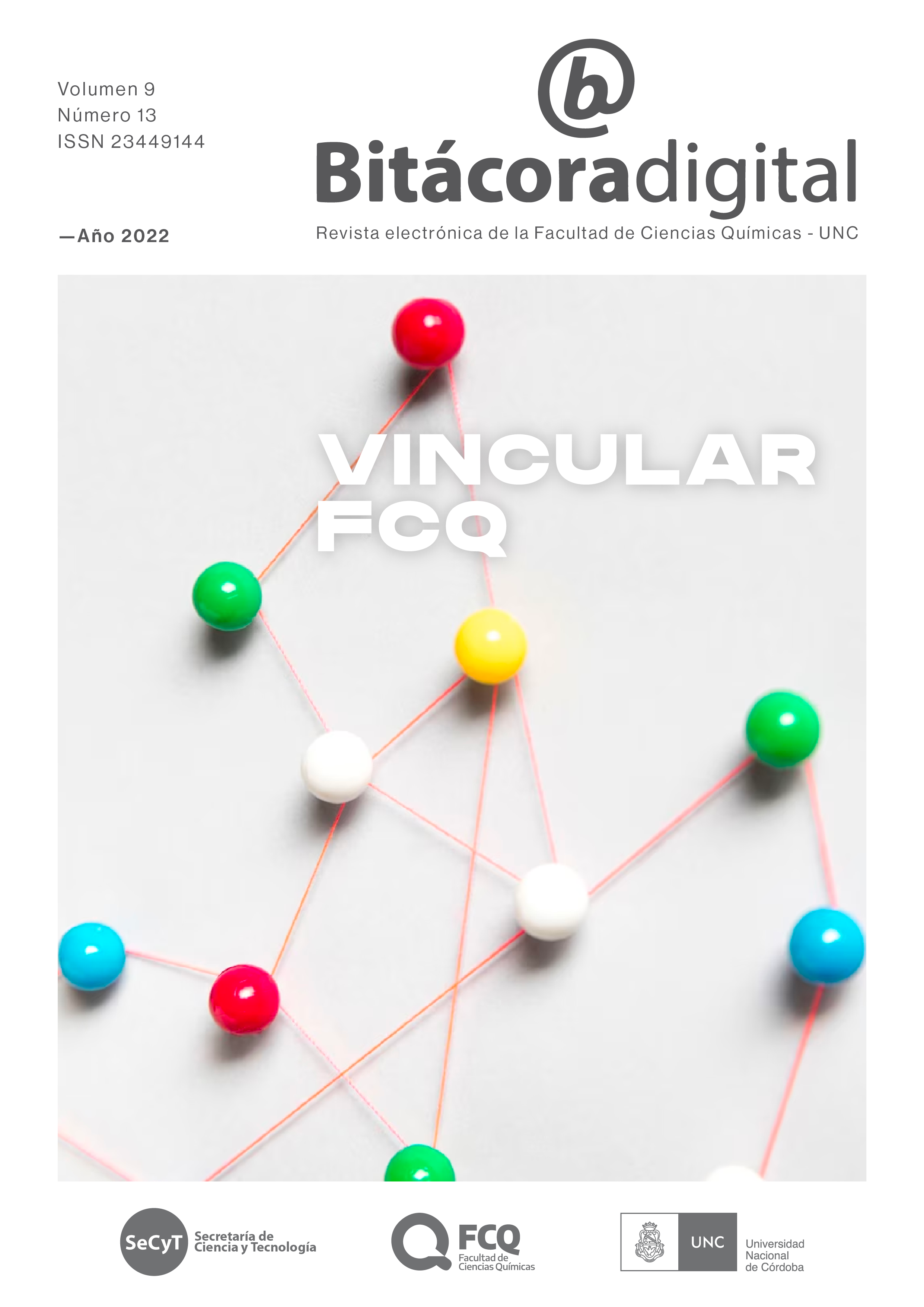Estudio de utilización de misoprostol en interrupción voluntaria del embarazo: análisis del consumo y perfil de usuarias en el Hospital Pasteur de Villa María
Keywords:
Ley N°27610, Misoprostol, IVE, Estudio de utilización de medicamentosAbstract
In Argentina, Law No. 27610 establishes that induced abortion is legal and free, in previously authorized cases or when pregnancy does not exceed fourteen weeks, inclusive. The recognized medicine to practice the voluntary interruption of pregnancy (VIP) is misoprostol 200 mcg.
Objectives
To carry out a study on the use of medications at the Hospital Pasteur de Villa María (HPVM). To analyze the consumption of misoprostol in two stages, before and after the sanction of the law. To describe the user profile for IVE, identifying social and demographic characteristics of pregnant women and of the medical procedure.
Methodology
For the study of misoprostol 200 mcg consumption, information was obtained from the expense reports of the computer system in two periods, before (March to December 2020) and after (March to December 2021) the sanction of the law. It was then expressed using the number of daily doses defined per 1000 inhabitants per day (DDH). The profile of the users was evaluated by conducting an observational, descriptive, cross-sectional study with retrospective data collection from March to December 2021. The qualitative parameters were described using absolute and relative frequencies and circular graphs. The quantitative ones with descriptive statistics and bar graphs.
Results
There was a more than 3-fold increase in the amount of misoprostol dispensed after the regulatory change (DHD=0.0103 vs 0.0339). As for the users, the average age was 26.4 years, the predominant educational level was complete primary and the majority of Villa María did not have social coverage. 50% used some contraceptive method before the procedure. The sublingual route of administration was the most indicated and in 85% the treatment was outpatient. The main complications were: genitorrhagia (35%) and missed or incomplete abortion (38%).
Conclusions
This is a controversial socio-scientific topic, with diverse discussions and arguments. This study is the first on the use of misoprostol in the HPVM, evaluating the difference in consumption before and after the law and the profile of the users for IVE. This analysis will contribute to designing and implementing strategies that improve the quality of care and health of the population. Finally, with the data obtained after completing the study, the pharmacy service proposed new objectives and projections that will favor the rational use of this medication. Keywords Law No. 27610, misoprostol, IVE, medication utilization study.
Downloads
References
Bibliografía
Ariza Navarrete S, Leonardi MC, Messina A, Ramón Michel A, Ramos S, Romero M. Protocolo para la atención integral de las personas con derecho a la interrupción voluntaria y legal del embarazo: Actualización 2021 [Internet]. 1ra ed. CABA. Ministerio de Salud de la Nación. Dirección Nacional de Salud Sexual y Reproductiva; 2021 [acceso 16 May 2022]. Disponible en: https://bancos.salud.gob.ar/sites/default/files/2021-05/protocolo-IVE_ILE-2021-26-05- 2021.pdf
Organización Mundial de la Salud (OMS). Manual de práctica clínica para un Aborto seguro [Internet]. Ginebra: OMS; 2014 [acceso 16 May 2022]. Disponible en: https://apps.who.int/iris/bitstream/ handle/10665/134747/9789243548715_spa.pdf?sequence=1
Federación Latinoamericana de Sociedades de Obstetricia y Ginecología (Flasog). Uso del Misoprostol en obstetricia y ginecología [Internet]. 3ra ed. Flasog; 2013 [acceso 16 May 2022]. Disponible en: http://www. fasgo.org.ar/images/Uso-de-misoprostol-en-obstetricia-y-ginecologia-FLASOG-2013.pdf
Lista Modelo de la OMS. Medicamentos esenciales [internet]. 14ta edición. Ginebra: OMS; 2005 [acceso 16 May 2022] Disponible en: https://apps.who.int/iris/bitstream/handle/10665/69102/a87410_spa. pdf?sequence=1
Acceso a la Interrupción Voluntaria del Embarazo, Ley 27610, Senado y Cámara de Diputados de la Nación Argentina, Rep. Arg. (Enero 15, 2021). [acceso 16 May 2022]. Disponible en: http://servicios.infoleg.gob.ar/infolegInternet/verNorma. do?id=346231
Centro Colaborador de la OMS para la Metodología de las Estadísticas de Medicamentos. Definiciones y consideraciones generales [Internet]. Oslo: WHO Collaborating Center; [actualizado 7 Feb 2018; acceso 16 May 2022]. Disponible en: https://www.whocc.no/ddd/definition_and_general_considera/
Instituto Nacional de Estadísticas y Censos (INDEC). Censo 2010 [Internet]. Ciudad de Bs.As: INDEC; [acceso 16 May 2022]. Disponible en: https://www.indec.gob.ar/indec/web/Nivel4-Tema-2-41-135
Stifani BM, Gill R, Kim CR. Reduciendo los daños del aborto inseguro: una revisión sistemática de la seguridad, efectividad y aceptabilidad de la consejería de reducción de daños para personas embarazadas que buscan un aborto inducido. BMJ Sex Reprod Health. 2022 Abr;48(2):137–45.
Isla V, Messina A, Ariza S, Arriola S, Arena G, Benetti C, et al. ImplementAR IVE-ILE. Ley 27610. Informe anual 2021 [Internet]. Bs As: Ministerio de Salud; 2022. [acceso 16 May 2022]. Disponible en: file:///C:/Users/ Usuario/Downloads/ImplementAR_IVE-ILE_21032022.pdf
Romero M, Ramos S, Ramón Michel A, Keefe-Oates B, Rizzalli E. Proyecto mirar: a un año de la ley de aborto en Argentina [Internet]. CABA: CEDES. Ibis Reproductive Health; 2021. [acceso 16 May 2022]. Disponible en: https:// repositorio.cedes.org/handle/123456789/4671
Downloads
Published
Issue
Section
License

This work is licensed under a Creative Commons Attribution-NonCommercial-ShareAlike 4.0 International License.
Licencia Creative Commons BY NC
Usted es libre de:
- Compartir — copiar y redistribuir el material en cualquier medio o formato
- Adaptar — remezclar, transformar y construir a partir del material
- La licenciante no puede revocar estas libertades en tanto usted siga los términos de la licencia
Bajo los siguientes términos:
-
Atribución — Usted debe dar crédito de manera adecuada, brindar un enlace a la licencia, e indicar si se han realizado cambios. Puede hacerlo en cualquier forma razonable, pero no de forma tal que sugiera que usted o su uso tienen el apoyo de la licenciante.
-
NoComercial — Usted no puede hacer uso del material con propósitos comerciales.

